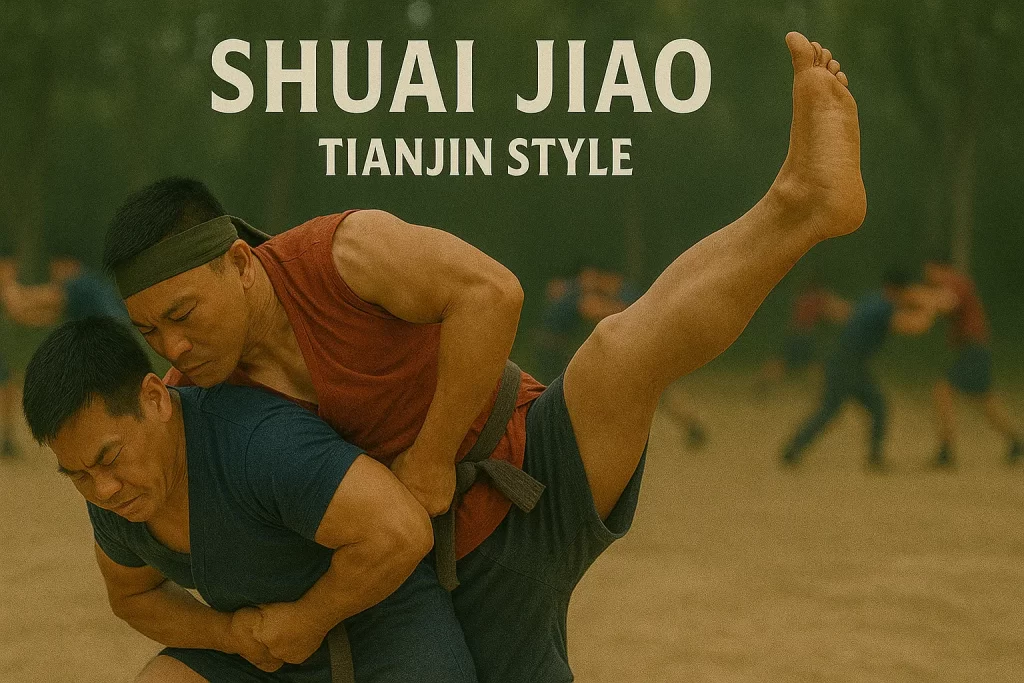Tianjin Style Shuai Jiao

Tianjin Style Shuai Jiao is a dynamic and pragmatic variant of Chinese wrestling that flourished in the bustling port city of Tianjin. It combines aggressive stance control, quick-paced leg traps, and forceful torso throws — a style shaped by urban challenges and competitive street fighting. Unlike more ceremonial styles, Tianjin emphasizes direct application, physical conditioning, and seamless movement transitions. It evolved through tight-knit teacher lineages and dockside matches, giving it a raw yet refined edge. The style remains influential in northern China’s wrestling circles and is prized for its efficiency and practical footwork.
Tianjin Style Essentials
About Tianjin Style
Get an overview of Tianjin Style Shuai Jiao — an urban-born wrestling system defined by speed, pressure control, and relentless attack angles.
Tianjin Style History
Discover how Tianjin’s industrial and military history shaped its wrestling traditions, turning a folk practice into a gritty urban combat form.
Philosophy & Approach
Learn how Tianjin wrestlers focus on overwhelming pressure, angular takedowns, and fluid motion rooted in realism and adaptability.
Techniques & Style
Explore signature Tianjin moves like inside thigh hooks, drag-and-drop throws, and stance-breaking techniques developed in crowded city streets.
Traditions & Etiquette
Understand the no-frills ethos of Tianjin Shuai Jiao — where respect is earned through sweat, performance, and discipline, not ceremony.
Uniform & Symbols
Examine the functional gear used in Tianjin wrestling: tight-fitting jackets, reinforced belts, and minimalist aesthetics focused on mobility.
Weapons
Though weaponless in form, Tianjin wrestlers often trained alongside military personnel, applying grappling concepts to baton and bayonet.
Ranking System
Delve into Tianjin’s results-based hierarchy, where titles reflect competition wins and the mastery of application rather than abstract belts.
Tianjin Style Glossary
Familiarize yourself with local terminology like gua tui (hooking leg) and yao zhua (waist claw) that define the language of Tianjin wrestling.
Notable Figures
Meet pivotal coaches and champions from Tianjin’s past — many of whom served in the military or taught in security academies.
Branches & Organizations
Trace the lineage of Tianjin clubs and federations, from Qing-era training houses to modern-day institutions preserving the city’s legacy.
Competitive Format
Step inside the Tianjin ring system — fast-paced bouts, aggressive clinches, and score-based judging with limited resets and high intensity.

